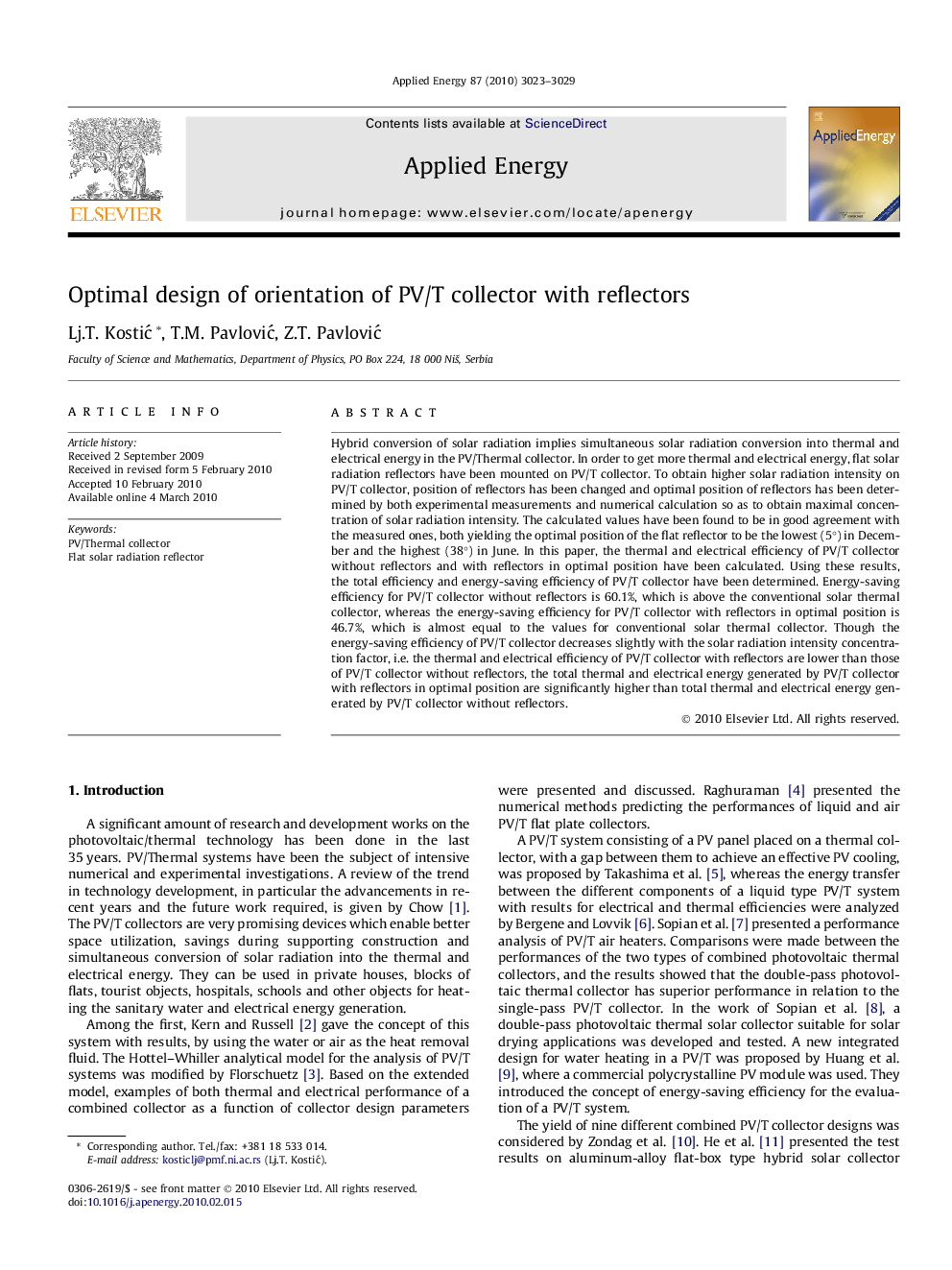| Article ID | Journal | Published Year | Pages | File Type |
|---|---|---|---|---|
| 244053 | Applied Energy | 2010 | 7 Pages |
Hybrid conversion of solar radiation implies simultaneous solar radiation conversion into thermal and electrical energy in the PV/Thermal collector. In order to get more thermal and electrical energy, flat solar radiation reflectors have been mounted on PV/T collector. To obtain higher solar radiation intensity on PV/T collector, position of reflectors has been changed and optimal position of reflectors has been determined by both experimental measurements and numerical calculation so as to obtain maximal concentration of solar radiation intensity. The calculated values have been found to be in good agreement with the measured ones, both yielding the optimal position of the flat reflector to be the lowest (5°) in December and the highest (38°) in June. In this paper, the thermal and electrical efficiency of PV/T collector without reflectors and with reflectors in optimal position have been calculated. Using these results, the total efficiency and energy-saving efficiency of PV/T collector have been determined. Energy-saving efficiency for PV/T collector without reflectors is 60.1%, which is above the conventional solar thermal collector, whereas the energy-saving efficiency for PV/T collector with reflectors in optimal position is 46.7%, which is almost equal to the values for conventional solar thermal collector. Though the energy-saving efficiency of PV/T collector decreases slightly with the solar radiation intensity concentration factor, i.e. the thermal and electrical efficiency of PV/T collector with reflectors are lower than those of PV/T collector without reflectors, the total thermal and electrical energy generated by PV/T collector with reflectors in optimal position are significantly higher than total thermal and electrical energy generated by PV/T collector without reflectors.
